March and April bring fresh new foliage back into our lives.
I love to capture this special time of year in photos, so that I can better recall at any time of year the brilliance and translucency of those young spring leaves. But sometimes, when going through the day’s photos, I have found that they don’t capture the spirit of what I saw through the lens.
Turns out the secret is to shoot into the sun. Here is one example of what I mean, right outside my front door:
Here’s a clump of culinary sage (Salvia officinalis) with the sun at my back. The new foliage is coming on, a soft gray-green (sage green, if you will), but the photo is not too memorable.
Moving around to the other side, the leaves are now lit up.
Don’t be shy. Take a good, close look. See how nubbly the leaves are now!
Here’s heavenly bamboo (Nandina domestica). No slouch in the color department with its evergreen (everpink? everyellow?) leaves, but…
Get down on the ground and shoot up at the sky. Zowie! Keep in mind that these before and after shots are all of the same plants, taken on the same day, with the same camera.
Here a redtwig dogwood (Cornus sericea) is sending out tender new leaves, but the shot is ho-hum.
From the other side it is exquisite. I did hardly any editing on any of these photos.
Shooting into the sun does create a lot of glare in your photos if you’re not careful. The image will have a whitish haze like this pic of Euphorbia griffithii emerging or it will show bright spots of pink, purple, or orange.
Just hold up your hand or a piece of cardboard to block the glare. Be sure to keep your hand out of the frame!
Who doesn’t welcome the first leaves of common lilac (Syringa vulgaris) in spring? As of yet, unmildewed and perfect.
But that’s even more perfect. You can even see the fuzz on the stems and leaf margins.
Honeysuckles (Lonicera spp.) get leafy early, showing pink, purple, green, and blue pigments when viewed head-on,
and warm copper, gold, and burnished orange tones when illuminated from behind.
Humble plants like the early-leafing raspberries can look much more dramatic
when the sun shines through their leaves instead of on them.
The same goes for early-sprouting daylily foliage… a morning shot here looking west,
and the same plant, looking east into the rising sun.
Katsura (Cercidophyllum japonicum) is an early-leafing tree. On some, the foliage comes out a butterscotch color, or more of a bronze-red, like this one, before turning green.
With the sun behind it, you see how thin and delicate the leaves really are. I wonder, what would a treeful of leaves like this look like?
Probably something like this. New copper pennies, freshly minted.
This ‘Accolade’ elm gets plenty of accolades from me. Love those shiny, shiny, pleated leaves.
But when I contorted my body to get a better shot, I was richly rewarded.
I do apologize to my friends back in the Midwest… This is Lyonothamnus floribunda ssp. asplenifolia, a very cool tree, unfortunately only hardy to Zone 8b. Its evergreen leaves look like this head on,
and like this when lit up. In colder zones you could get the same effect with ferns later in the year.
‘Goldflame’ spirea is much more accessible, and while it looks brilliant with the light over my shoulder,
it’s more fun to see it combust in the sunshine.
Roses have some of the earliest foliage of all, and it’s not always green. Many times it’s rose, red, or bronze. In this light it’s a dull pink,
but in the sun it’s much more vibrant.
And here’s what the whole plant looks like. You might have mistaken it for the ‘Goldflame’ spirea!
So much drama to be found, and with only foliage… Imagine what effects the sun can have on flowers! Cross your fingers for a nice, sunny day to come again soon, and I’ll charge my battery.


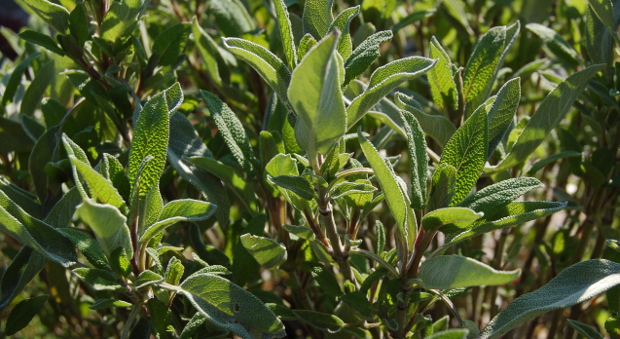
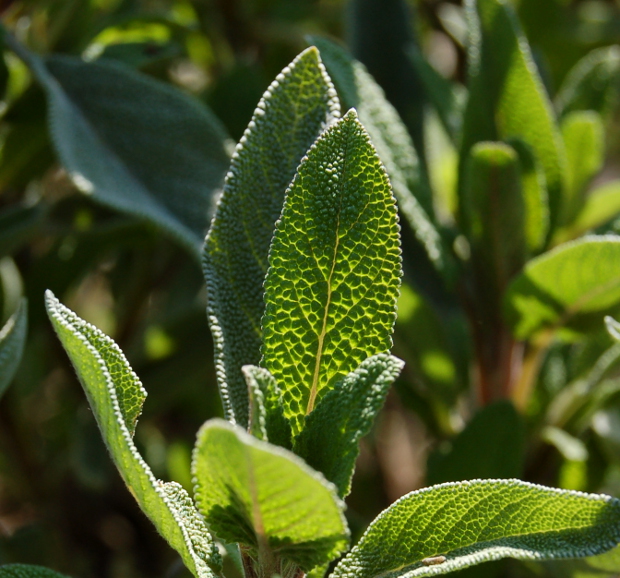
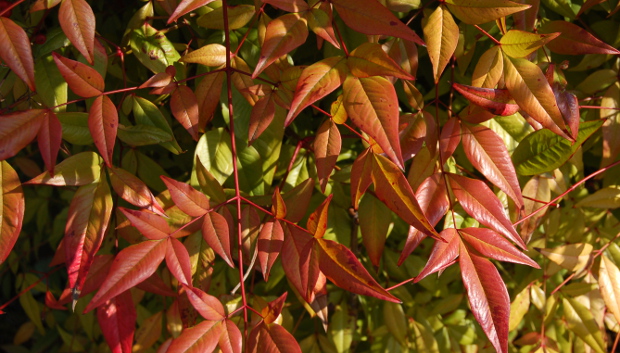
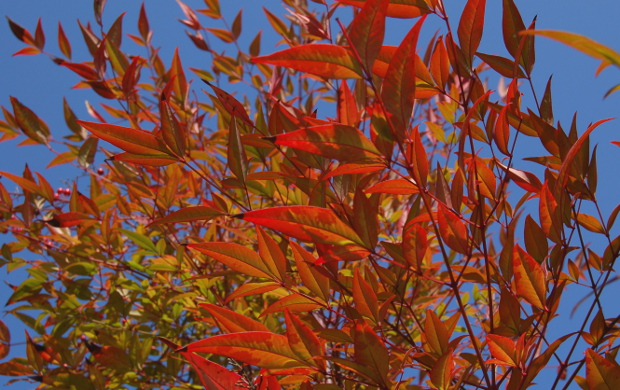
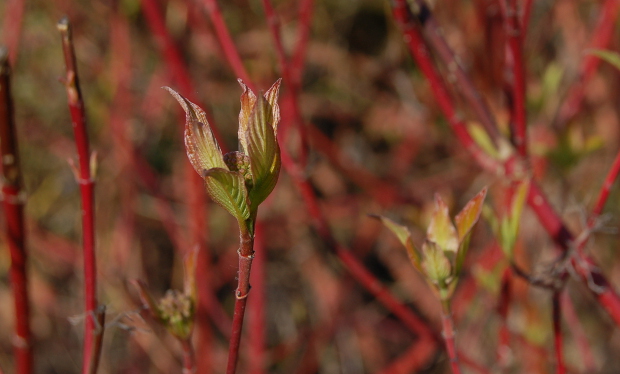
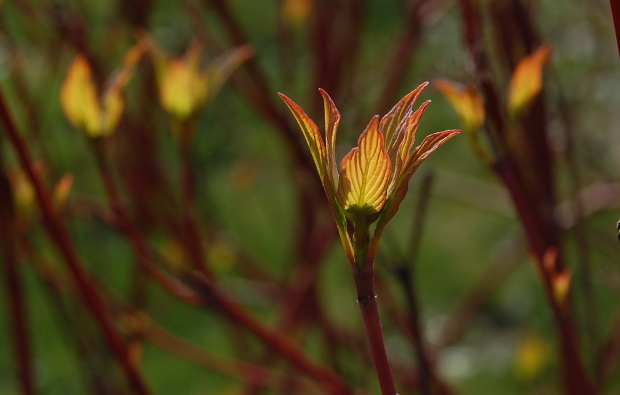
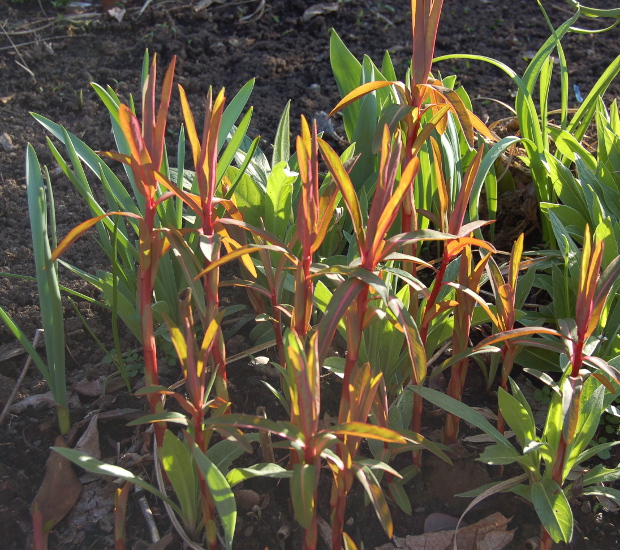

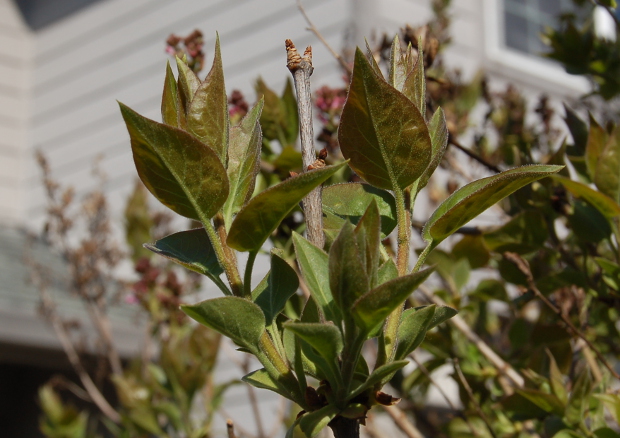

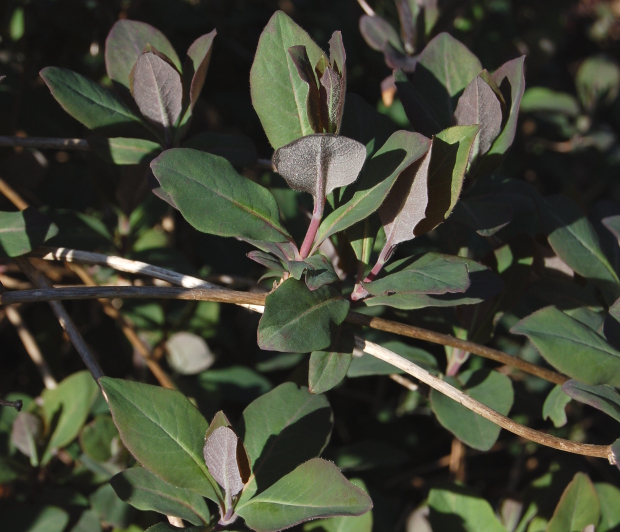

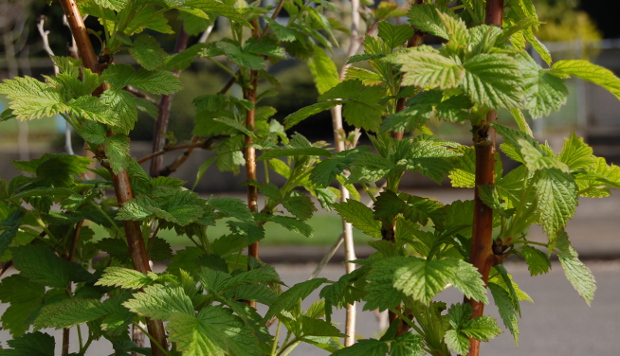
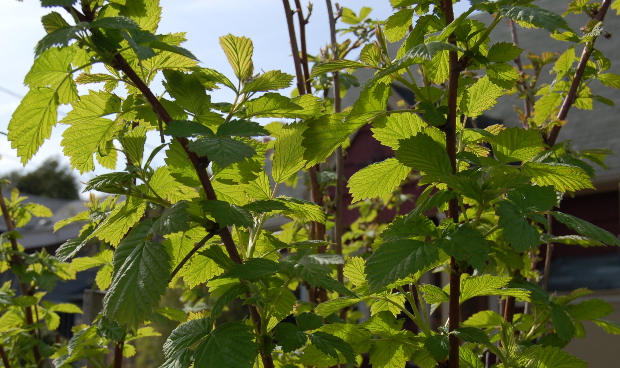


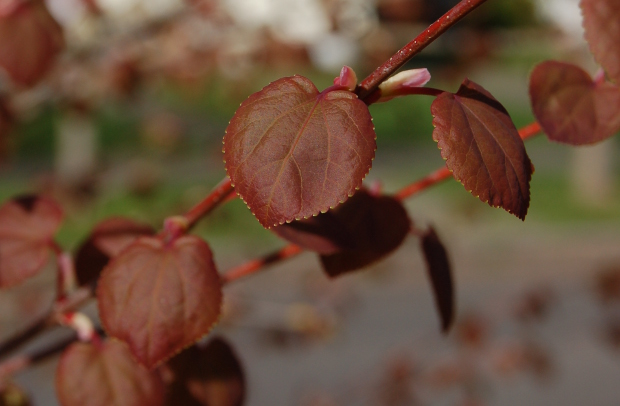
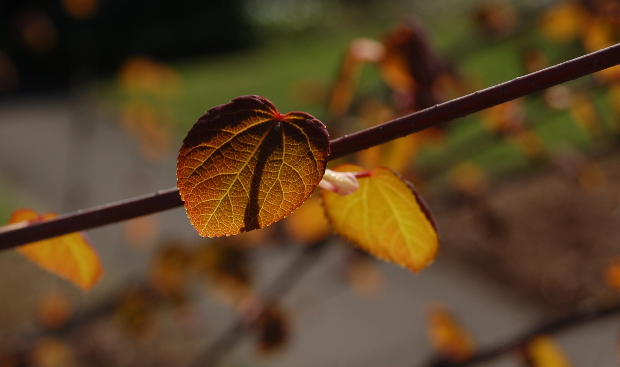



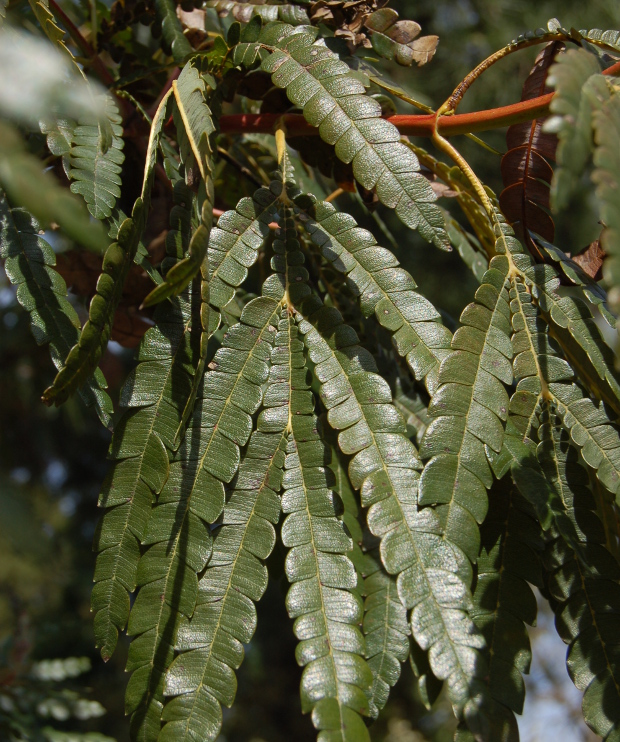


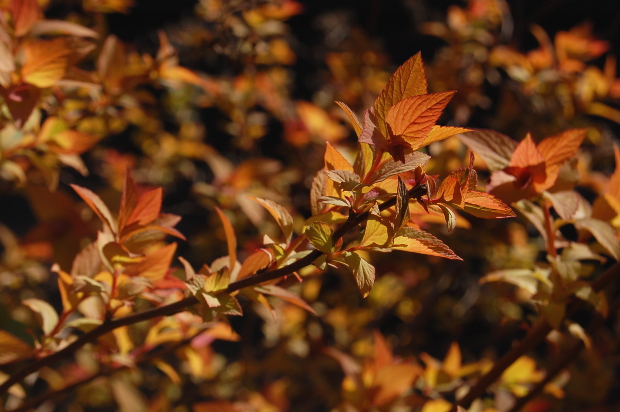
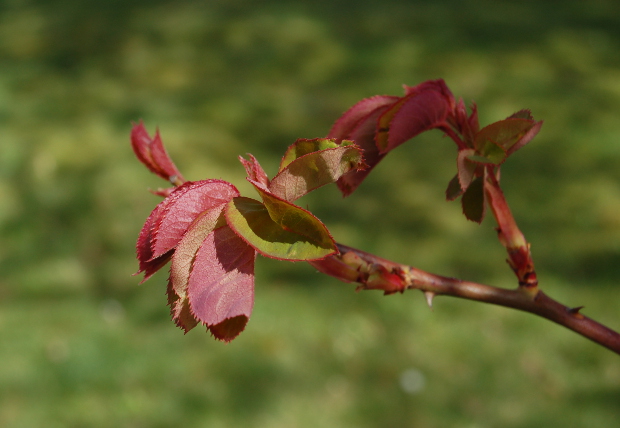
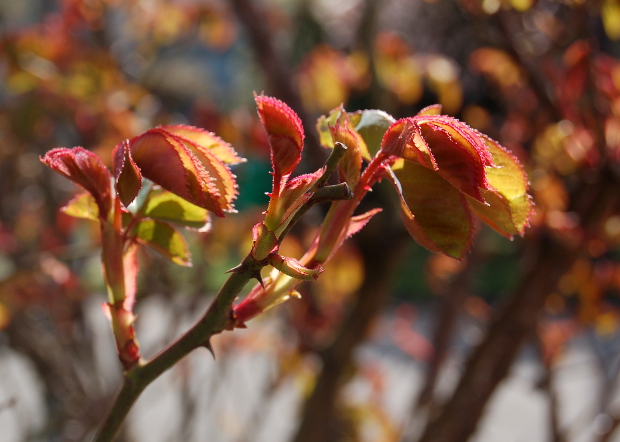

























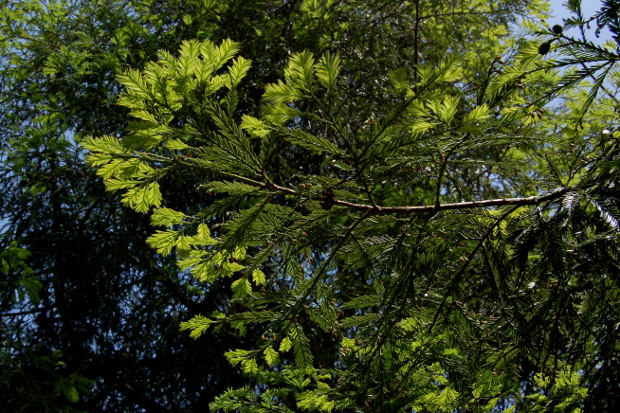


Nice tutorial…I can hardly wait to get out there and try it. C’mon sun!
Thanks! Yeah, I don’t have any tricks for photographing in the rain. That’s a little beyond my abilities and equipment! I guess we could use some rain after all those glorious days of sunshine.
Great tips and great shots too!
Thanks, Brooke! I get a lot more keepers when I use this trick, although sometimes it’s awkward to get my body in a position to take the shot!
Amy,
Thanks so much for these shooting tips. I also photograph the plants and insects in my garden. I’ve captured a few of these “into the sun” shots accidentally in the past, and some turned out great. I’m interested to read more from you on photography, since our subject-matter is so similar.
I just found your site (2.1.2024), and I love it. I also have a website/blog where I share my garden and our dogs. The style of your site is engaging, and I admire your ability to be so prolific. I was looking around the web yesterday for inspiration, and I found it here. I look forward to reading more!
Your fellow gardener, Angie